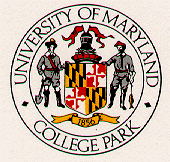

![]()
Please place your answers on the answer sheet provided. These are the only answers that will be graded. Each question has a value of 2.5 points. Also, please use a ball point or ink pen when writing your answers. Answers written in pencil will not be re-graded. Be sure to use the correct taxonomic designation when writing the name of an organism.
1.For the successful establishment of an infectious agent in the respiratory tract of a susceptible host, which of the following must be considered?
2.An infecting agent penetrates, colonizes, and multiplies in host tissue. Host defense mechanisms are overcome and host tissue damage ensues. This sequence leading to infection may be influenced by which of the following:
3.Your urinary tract has supported the growth of Escherichia coli. You isolate the organism in pure culture and perform a tube susceptibility test with ampicillin. Growth is inhibited at 4.0 mcg/ml but not at 3.0 mcg/ml. Subculturing of each tube to blood agar reveals growth of E. coli from the 3.0 mcg/ml tube but not the 4.0 mcg/ml tube. You may conclude that the activity of ampicillin at 4.0 mcg/ml is:
4.Bacterial antibiotic resistance may be:
5. Bacterial antibiotic resistance is a consequence of the mutagenic action of the antibiotic on the bacterial chromosome or plasmid.
6.Although used in chemotherapy because of unique properties, the following substance(s) cannot be defined as (an) antibiotic(s):
7.Your friend has a superficial skin infection due to Staphylococcus aureus. You caution him/her to adhere to the prescribed therapeutic regimen because the infection may lead to:
8.Infection of a host with an agent and the subsequent multiplication of this agent is dependent upon the dose and degree of pathogenicity of the agent. This relationship varies inversely with the resistance of the host. These statements are:
9.The ability of an organism to is an important initial determinant of pathogenicity.
10.Which of the following have an effect on the zone diameter of an antibiotic in an agar diffusion test.
11.The Beta-lactam ring of penicillin which is inactivated by the Beta-lactamase of some penicillinase positive S. aureus is shown at which position above?
12.Which of the following extracellular products/virulence factors may be produced by Streptococcus pyogenes:
13.Sequelae of a Streptococcus pyogenes pharyngitis may include:
14.The component(s) of S. pneumoniae which is (are) responsible for its disease producing ability is (are):
Questions 15-17: Give the full name of the organism associated with the following:
15. Played an important part in the discovery of DNA as the genetic code
16.Gram positive coccus primarily associated with urinary tract infections of young females.
17.Causes exfoliative disease of children.
18.The best way to type Staphylococcus aureus is:
18.The Protein A of Staphylococcus epidermidis is used in the preparation of diagnostic reagents for the identification of other organisms.
19.Diseases produced by S. aureus may include:
20. (True or False) The exposed teichoic acid or C-substance of S. pneumoniae is species specific and unrelated to the group-specific carbohydrates observed by Lancefield in beta-hemolytic streptococci.
21. Which of the following is not characteristic of S. pneumoniae
22. All of the following diseases can be attributed to S. pneumoniae except:
23. (True or False) Skin infections with Staphylococcus aureus are highly contagious.
24. Symptoms of acute food poisoning duet staphylococca enterotoxin occur how long after ingestion?
| Lecture Syllabus | General Course Information | Grade Determination |
| Laboratory Syllabus | Interesting WebSite Links | Lab Safety |